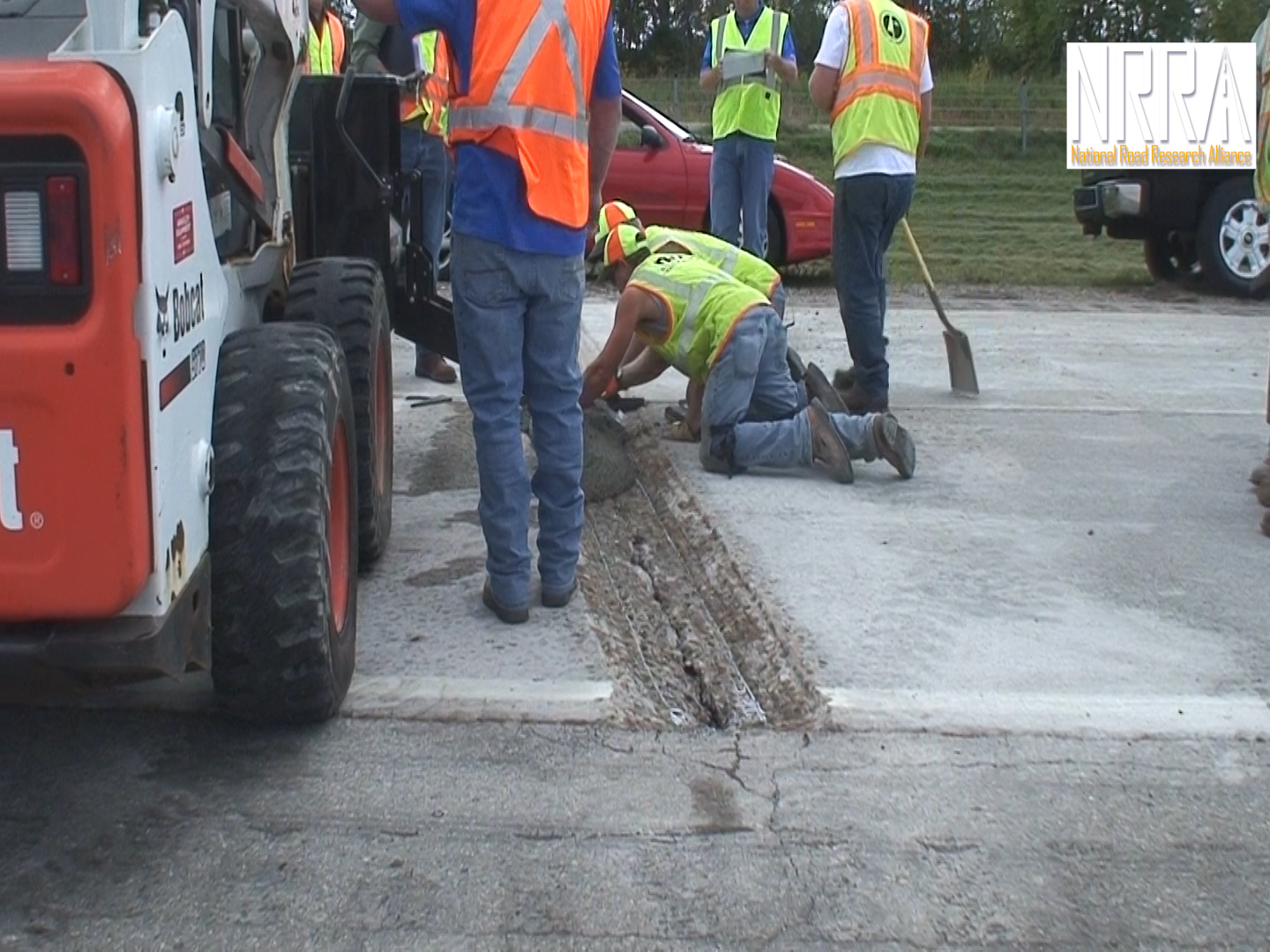MnROAD | NRRA | Structure & Teams | Preventive Maintenance Team
Effective Long Lasting PCC Partial Depth Joint Repairs for Challenging Conditions
Status: Completed
Project Start Date: November 2, 2017
Project End Date: April 30, 2021
Project summary
As Portland Cement Concrete (PCC) pavements age, longitudinal and transverse joints can exhibit signs of distress as a result of traffic loading, climatic variations, materials related issues, and construction defects. Although only small areas are often involved, the joint distress can substantially disrupt traffic flow and increase pavement roughness sacrificing consumer ride comfort. Furthermore, secondary distresses and degradation of otherwise sound concrete can occur due to poor joint conditions.
Joint distress can range from minor spalling that requires no immediate action to major distresses that can affect large areas of the pavement and significantly disrupt traffic. When immediate action is required, temporary repairs are often made using readily available materials, such as cold mix or other asphalt materials. These temporary materials are oftentimes replaced at a later date with more permanent materials to re-establish the integrity and functionality of the concrete pavement.
When longer-lasting materials are used in the initial joint repairs, the impact to travelers is reduced and additional costs for temporary materials and subsequent removals are eliminated. Different material types are available for longer-term repairs which vary widely in cost, required skill level for satisfactory placement, and time needed before opening to traffic. The performance of each of these materials can also vary widely making selection and installation of permanent repairs challenging.
Traditionally, joint repairs have been assumed to last 6 to 8 years, but some agencies have experienced patch service life in excess of 20 years. With the range of products available and performance periods experienced, there is a need to determine the current state-of-the-practice.
The goal of this project is for the Contractor to provide a guide for State and other agencies to establish an effective joint repair program. The final report will guide State through product selection, installation techniques, equipment needed for completing the repair, typical performance cost, along with the life expectancy of the repair products.
Longer lasting patches on Minnesota's PCC pavements will reduce the need for lane closures, user delays and safety concerns, reduce PCC pavement maintenance costs, and increase availability of State District Maintenance staff to perform other duties.
Project tasks/status
Original Need Statement: Partial Depth Repair (DOC) - 4/20/2017
Task 1
Task 2
- Survey and Literature Review (DOC)
- Review Patching Products for Rapid Setting Partial Depth Repairs (PDF)
Task 3: Annual condition review and interim report
- Product contacts (DOC)
- Year 1 Report (PDF), published 2/10/2020
- Year 2 Report (PDF), 4/14/2020
Task 4: Draft report
- Draft report (DOC), 10/31/2020
- Draft Appendix (PDF), 10/31/2020
Task 5: Final report
- Final report, 4/20/2021
Task 6: Project management
Project team
Principal Investigator: Heidi Olson, Braun Intertec
Technical Liaison: Jerry Geib, MnDOT
Project Technical Advisory Panel (TAP)
- Gordy Bruhn, MnDOT
- Tom Burnham, MnDOT
- Eshan Dave, UNH
- Jerry Geib, MnDOT
- Mark Gawedzinski, Illinois DOT
- MK Kang, WisDOT
- Maria Masten, MnDOT
- Clark Moe, MnDOT
- John Roberts, International Grooving and Grinding Association (IGGA)
- Timo Saarenketo, RoadScanners
- Joel Ulring, MnDOT
Related materials
- List of Possible Partial Depth Patching Materials (XLS)
- CIE 822 Paper (PDF)
- 2016 MnROAD Report - PCC Partial Depth Repairs (PDF)
- Video of Partial Depth Repairs, Oct. 2017
Final report
Final report, April 30, 2021

